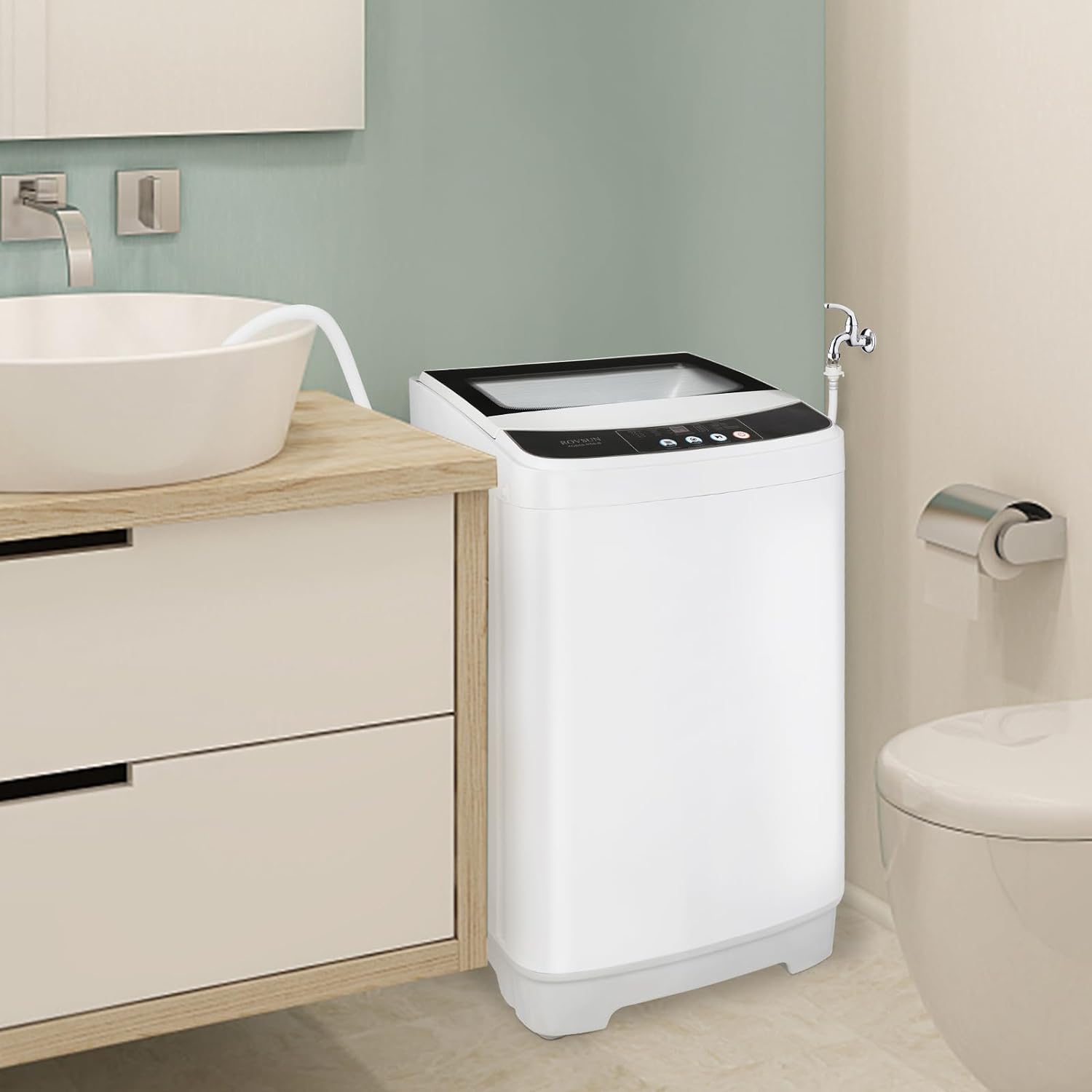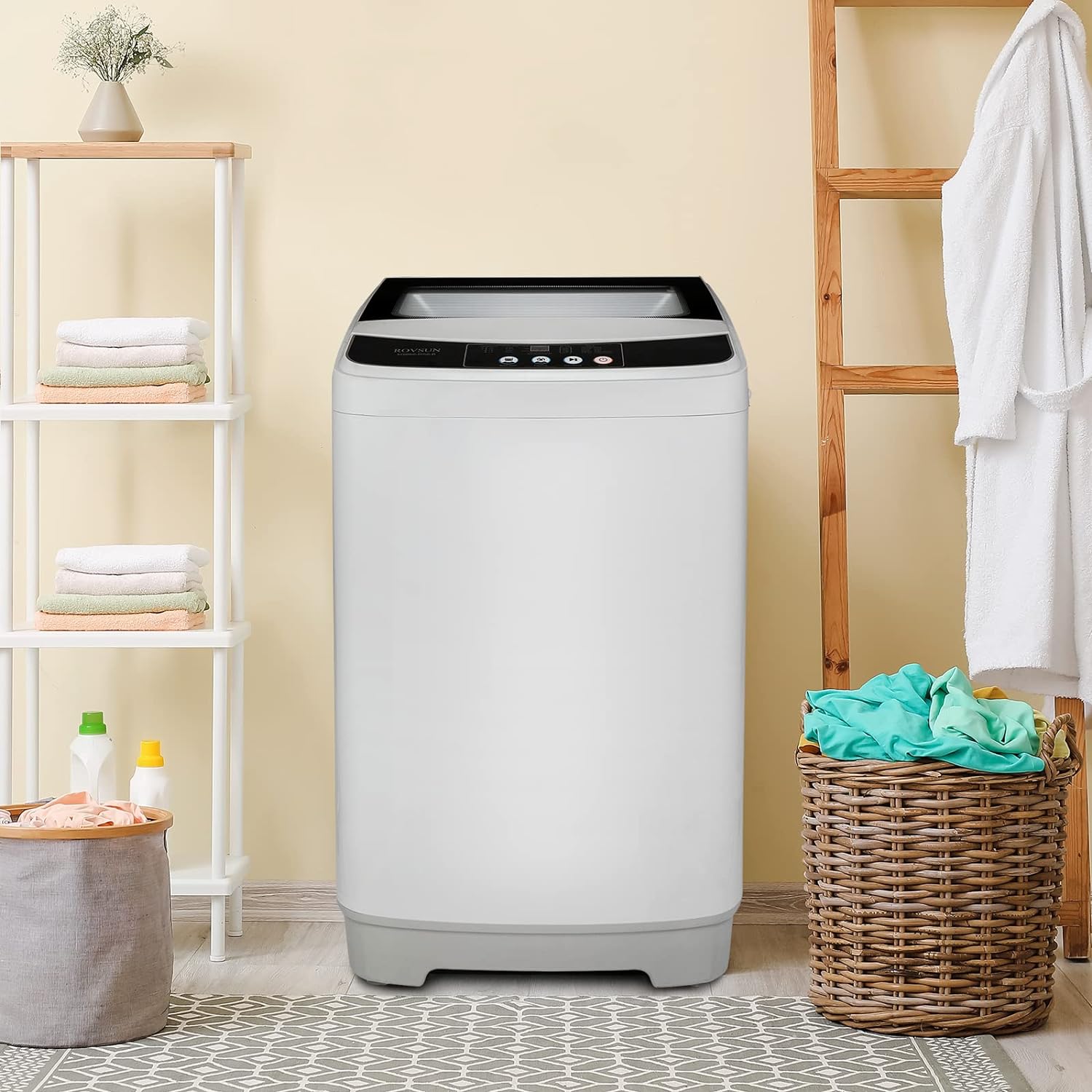Introduction:
A smelly washing machine can transfer unpleasant odors to your clothes and diminish the overall laundry experience. Odors often result from mold, mildew, soap scum, and residue buildup within the machine. This comprehensive guide will help you understand the reasons behind a smelly washing machine and provide detailed, step-by-step instructions to clean and maintain a fresh-smelling washer.

How to Clean a Washing Machine That Smells:
What Steps Should You Follow for a Fresh-Smelling Washer?
Understanding the Causes:
Why Does My Washing Machine Smell?
Identifying the root causes of odors in your washing machine is essential for effective cleaning and prevention.
Mold and Mildew Growth:
Moist Environment: Washing machines naturally create a humid environment, ideal for mold and mildew to thrive, especially if the machine is frequently left closed when not in use.
Residual Water: Water left in the drum, door seals, and detergent dispenser can become stagnant and promote mold growth, leading to unpleasant odors.
Soap Scum and Detergent Residue:
Detergent Buildup: Excessive use of detergent and fabric softener can result in soap scum and residue buildup. This buildup provides a food source for bacteria and mold.
High-Efficiency Detergents: Using regular detergent in high-efficiency (HE) washers can exacerbate residue issues, as these machines use less water, making it difficult to rinse away excess soap.
Lack of Regular Cleaning:
Neglect: Failing to clean your washing machine regularly allows dirt, grime, and bacteria to accumulate, leading to unpleasant smells over time.
Routine Maintenance: Regular deep cleaning and maintenance help prevent these issues and keep your washer smelling fresh.

Cleaning the Drum:
How Can You Properly Clean the Interior of Your Washing Machine?
Cleaning the drum involves removing debris, mold, and mildew to restore freshness.
Regular Cleaning Cycle:
Empty Drum: Ensure the washing machine drum is empty. Remove any lingering clothes or items.
Hot Water Cycle: Run a hot water cycle with the machine empty. Use the hottest water setting available to help kill bacteria and mold. If your machine has a cleaning cycle option, choose that setting.
Cleaning Agents:
White Vinegar: Add 2 cups of white vinegar to the drum. Vinegar is a natural disinfectant and deodorizer that effectively removes odors and kills mold and mildew.
Baking Soda: Sprinkle half a cup of baking soda inside the drum. Baking soda neutralizes odors and acts as a gentle abrasive, helping to scrub away residue.
Deep Cleaning:
Soaking Time: Allow the washing machine to fill with hot water and soak for an hour. This soaking period helps to loosen and dissolve any stubborn grime and residue.
Complete the Cycle: After soaking, let the washing machine complete its cycle. This process will rinse away the vinegar, baking soda, and any dissolved dirt.

Cleaning the Gasket and Seals:
What Should You Focus On for a Thorough Cleaning?
The gasket and seals are common places for mold and mildew to form, especially in front-loading washers.
Inspect and Clean:
Visible Mold: Inspect the door gasket for visible mold and mildew. Pay close attention to the folds and crevices where moisture can get trapped.
Cleaning Solution: Mix a solution of one part water and one part white vinegar or use a commercial mold and mildew cleaner.
Scrubbing: Dip a cloth or sponge in the cleaning solution and thoroughly wipe down the gasket. Use an old toothbrush to scrub hard-to-reach areas and stubborn spots of mold and mildew.
Rinsing: Rinse the gasket with a damp cloth to remove any leftover cleaning solution and residue.
Drying:
Air Dry: Leave the washer door open for several hours or overnight to allow the gasket to dry completely. This helps prevent future mold and mildew growth by eliminating moisture.
Regular Maintenance: After each wash, wipe down the gasket and leave the door slightly ajar to keep the area dry and ventilated.

Cleaning the Detergent Dispenser:
How to Remove Residue and Prevent Odors?
The detergent dispenser can accumulate soap scum and mildew, contributing to unpleasant smells.
Removing the Dispenser:
Detergent Drawer: Consult your washing machine’s manual to learn how to remove the detergent drawer or dispenser. Most are designed to be easily removable.
Soaking:
Soaking Solution: Soak the detergent drawer in warm water mixed with a mild detergent or vinegar solution. This soaking helps loosen caked-on detergent and grime.
Scrubbing:
Brush or Cloth: Use a soft brush or cloth to scrub the dispenser thoroughly, paying attention to corners and crevices. An old toothbrush works well for reaching tight areas.
Rinsing: Rinse the dispenser thoroughly with clean water to remove all cleaning solution and residue.
Reinstalling:
Dry Completely: Ensure the dispenser is completely dry before reinstalling it in the washing machine. This step helps prevent mold and mildew growth.
Cleaning the Filter and Drain Pump:
Why Is This Important for Odor Control?
The filter and drain pump can trap debris, leading to stagnant water and bad smells.
Locating the Filter:
Manual Reference: Refer to your washing machine’s manual to locate the filter and drain pump. Typically, they are found behind a small door or panel at the front of the machine.
Removing the Filter:
Access Panel: Open the access panel and carefully remove the filter. Have a towel or shallow pan ready to catch any water that might spill out.
Cleaning the Filter:
Rinse and Scrub: Rinse the filter under running water. Use a brush to remove any trapped debris, lint, or residue. Ensure the filter is completely clean before reinserting it.
Drain Pump: Check the drain pump for any debris and clean it if necessary. This step ensures smooth operation and reduces the risk of odors.
Reinstallation:
Securing the Filter: Reinsert the clean filter and secure it in place. Close the access panel tightly.
Routine Cleaning: Clean the filter regularly, about once a month, to prevent buildup and odors.

Using Commercial Cleaners:
What Products Can Help Keep Your Washing Machine Fresh?
Commercial washing machine cleaners are formulated to tackle odors and build-up effectively.
Choosing a Cleaner:
Brands and Types: There are various commercial cleaners available, such as Affresh, Tide Washing Machine Cleaner, and OxiClean Washing Machine Cleaner. Choose a reputable brand and match it to your washer type (front-load or top-load).
Usage Instructions:
Manufacturer Guidelines: Follow the instructions on the cleaner’s package. Typically, you’ll place the cleaner in the detergent drawer or directly in the drum and run a cleaning cycle with hot water.
Regular Use:
Maintenance Schedule: Using a commercial cleaner once a month helps maintain a fresh-smelling machine by preventing the buildup of residue, mold, and mildew.
Natural Alternatives:
What Safe and Eco-Friendly Options Exist for Cleaning Your Washer?
For those who prefer natural cleaning methods, several eco-friendly options effectively remove odors and residue.
White Vinegar and Baking Soda:
Vinegar Wash: Run an empty hot water cycle with 2 cups of white vinegar added directly to the drum. Vinegar breaks down buildup and deodorizes the washer.
Baking Soda Boost: Follow the vinegar cycle with another hot water cycle, adding half a cup of baking soda to the drum. Baking soda further scrubs the interior and neutralizes any remaining odors.
Lemon Juice:
Alternative Acidic Cleaner: Lemon juice can be used in place of vinegar. Add 2 cups of lemon juice to an empty hot water cycle to achieve similar descaling and deodorizing effects.
Essential Oils:
Fresh Scent: For a pleasant fragrance, add a few drops of essential oil like tea tree oil or lavender oil to the final rinse cycle. Essential oils also have natural antibacterial properties.
Conclusion
A smelly washing machine can be both frustrating and unhygienic, but regular cleaning and maintenance can keep your appliance fresh and efficient. By addressing the common causes of odors, such as mold, mildew, and detergent buildup, and following detailed cleaning steps, you can ensure your washing machine remains odor-free. Incorporate routine maintenance and preventive measures into your laundry routine to extend your machine’s lifespan and improve overall laundry hygiene. Use this guide to enjoy a fresh-smelling washing machine and a more pleasant laundry experience.

